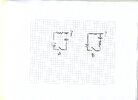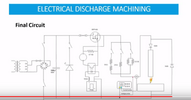Never designed a circuit before but do know how to Google. Have tried to find my answers with no success, so here goes.
In the illustration is there a difference in the result on how the circuit is made? I'd like to keep the resistor out of the output path of the cap, or caps, since this will make up a cap bank where one or more are used at a time.
Second question. Where the question mark is on the out put of the drawings, does the output equal the amount of charge put in the cap or does it not have an out put until the cap is charged fully. The caps are of different values and I'll be sizing the resistors so they end up with a similar charge tim, so they can all discharge together.
The caps/cap bank will be monitored by a comparator and when charged to a certain voltage level they then will get discharged into a spark gap. This is for an electrical discharge machine, a project that got me into studying electronics in the first place and a bucket list project. Thanks for any help in my understanding this.
In the illustration is there a difference in the result on how the circuit is made? I'd like to keep the resistor out of the output path of the cap, or caps, since this will make up a cap bank where one or more are used at a time.
Second question. Where the question mark is on the out put of the drawings, does the output equal the amount of charge put in the cap or does it not have an out put until the cap is charged fully. The caps are of different values and I'll be sizing the resistors so they end up with a similar charge tim, so they can all discharge together.
The caps/cap bank will be monitored by a comparator and when charged to a certain voltage level they then will get discharged into a spark gap. This is for an electrical discharge machine, a project that got me into studying electronics in the first place and a bucket list project. Thanks for any help in my understanding this.




